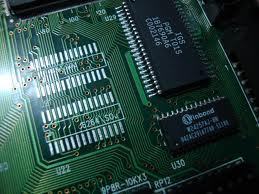Video RAM
Video RAM (VRAM) is a type of RAM used to store data related to images and videos that a computer’s monitor displays. Generally, Video RAM is stored on the computer’s DRAM (Dynamic Random Access Memory) and reads like any other data before it is translated into display content. Video RAM is used as a buffer between the computer’s processor and monitor, allowing it to process data faster and display content without delay.
How Video RAM Works
Video RAM stores images and video frames that the computer’s processor has identified as display content. Once the Video RAM receives data from the DRAM, it begins to convert the digital files into analog signals that the computer’s monitor can interpret. In most computer systems, Video RAM devices are dual ported, allowing them to convert display content from digital signals into analog signals while they are interpreting new data from the DRAM as display content. This method allows Video RAM devices to process data much faster and continuously display content on the monitor without waiting for new content to be processed.
Applications
Video RAM has many different applications and can be found on any electronic display device that is connected to a processing unit. While Video RAM can store content from the DRAM that the computer’s processor identifies as display content, its primary objective is to convert digital files into analog signals that can be displayed on the computer’s monitor.
Advantages
Video RAM is advantageous because it allows computers to communicate with display devices such as monitors and projectors. Video RAM is also responsible for storing display content, which decreases the DRAM’s workload, allowing the computer’s processor to analyze data much faster and concentrate on other functions such as retrieving raw data for the user. Dual ported Video RAM is advantageous because it is able to convert digital files into analog signals for the monitor while simultaneously collecting new data from the DRAM.


Comments - No Responses to “Video RAM”
Sorry but comments are closed at this time.